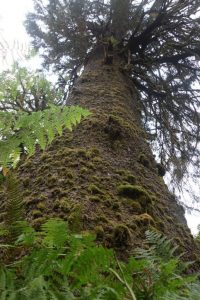Do all relationships hinge on money? Obviously not. But why is cash compensation so important in some partitions of life and not for others? Do you need cash to help your grandmother?

Consider the dynamics of volunteer labor in the environmental sector. Volunteer engagement is recognized as intellectually necessary, but not celebrated as efficient or effective. Volunteer labor shows up unpredictably in three to five hour blocks. We offer sub-optimal tools and set them to work wherever and whenever the money runs out. Volunteers are often tended by a high-turnover volunteer coordinator or intern. Few shops invest deeply in the skills and knowledge of their communities and there may be little continuity between one experience and the next. These dynamics are exacerbated by a system of distributed projects that arrive suddenly and then depart depending on grant availability. Each such shop competes for a share of government appropriations which define the scope of their effort. Each shop struggles between allocating labor to doing on-the-ground work , and grabbing and maintaining the attention of officials and funders. Projects may not address root causes of ecosystem decline, or otherwise pour water in a leaking bucket. We don’t expect landowners to be stewards, and most landowners don’t know anything about our watershed management. Agency acquisition, and removal of people, is celebrated as the sure way to protect the landbase.
So in this system, who holds the watershed vision? What does the community think about regulation? Do their politicians and officials need to have a coherent ecosystem platform?
I am not interested in another environmental hierarchy, with a board and an executive, competing to get grants to pay staff to work another strategic plan. This environmental project system is vital and full of good people doing good work–but it is not a system for empowering and building responsibility in community. We talk about community engagement like a marketing campaign. I am increasingly suspicious that we are missing the actual target.

We are focused on cash both because of a melange of social conditioning, and because our institutions punish those who don’t cleave to the written and unwritten rules of the competitive market. But what is the necessary scope of ecosystem stewardship? Where does this obligation to restore the watershed live? Who understands enough to care? What makes stewardship a living part of our culture? How do we retain and maintain the flow of information? How do stewardship skills pass from generation to generation? Where are YOU responsible for?
We need to start playing the long game.
The Ecosystem Guild vision could be described as a union of ecosystem volunteers. It is a egalitarian organization where members support each other in working towards shared goals. We invest in our membership to increase our capabilities, because belonging and knowledge gives us strength. We negotiate more rewarding and durable relationships among guild members, ecosystems, and local recovery efforts. We take apprentices, talk to new neighbors, and pitch in. The power of our union comes from detailed local knowledge, and in creating mutually beneficial relationships so that all members are nourished.

This system has functions that are not yet present, to enable a reciprocal relationship among peoples and land, and a local reintegration of cash and non-cash economies around the management of the commons. We have more financial capital than just about anywhere on earth, but we are still impoverished when it comes to ecosystem stewardship.
- Social Capital – what makes humans powerful is our ability to sustain complex organizations and coordinate our labor.
- Experiential Capital – the only way to act effectively in complex ecological system is to have the experience in those systems to see that pattern and design the intervention.
- Intellectual Capital – as we work, we accumulate stories, measurements and concepts that we can give to others, to support our shared work
- .Living Capital – the beauty of ecosystems is that they are self-replicating. We can grow most of what we need to do ecosystem restoration and our campsites and old projects if well-designed become a resources.
- Cultural Capital – the combination of our stories, rituals, taboos, and beliefs become the wellspring from which our children learn and act.
- Material Capital – restoration camping creates a pool of shelter, technologies and tools that will serve us for restoration or for disaster relief.
- Spiritual Capital – perhaps the greatest gift of restoring ecosystems is the connection to place, and to self and our many purposes that are far greater than the cash economy.
(This way of describing capital was borrowed from Ethan Rolland and Gregory Landua)
Our hypothesis is that a culture of stewardship will not emerge from a cash transaction (almost by definition!) Stewardship revolves around personal relationship with place, and that this relationship is best defined in terms direct and tangible. Stewardship capacity is build over time. So we do what 300,000 years of humanity has done. We take a piece of our short lives, and go tend to the ecosystem with our community. By forming a union of stewards, we remove the inter-mediation of the agency and the non-profit, and instead of being pushed to do tasks of little consequence, we turn and pull the whole of society, industry, and government into the true generational work sitting right in front of us.


